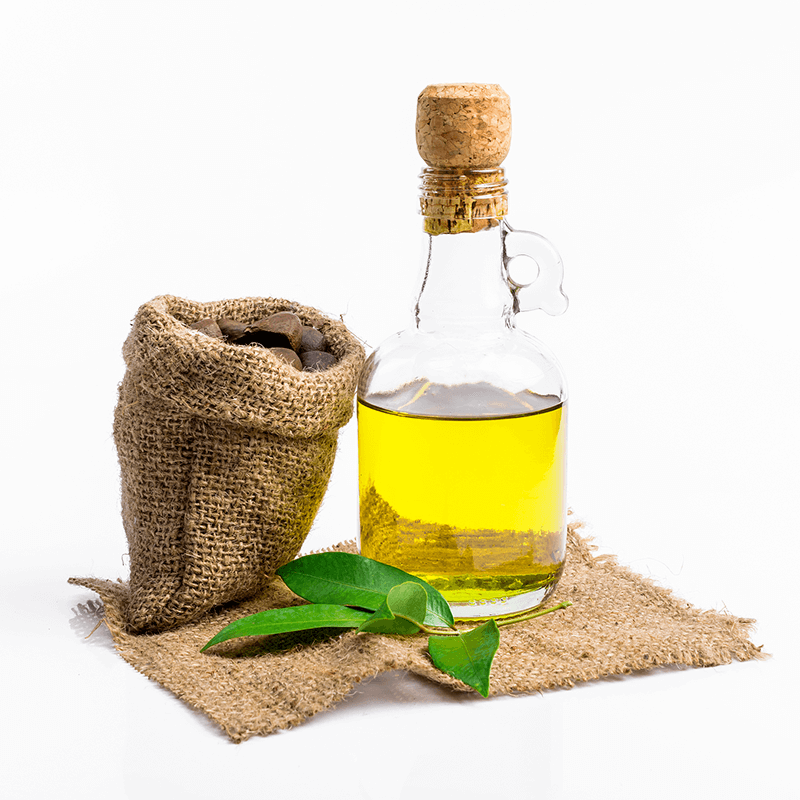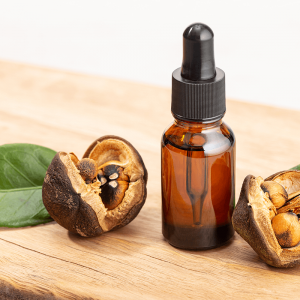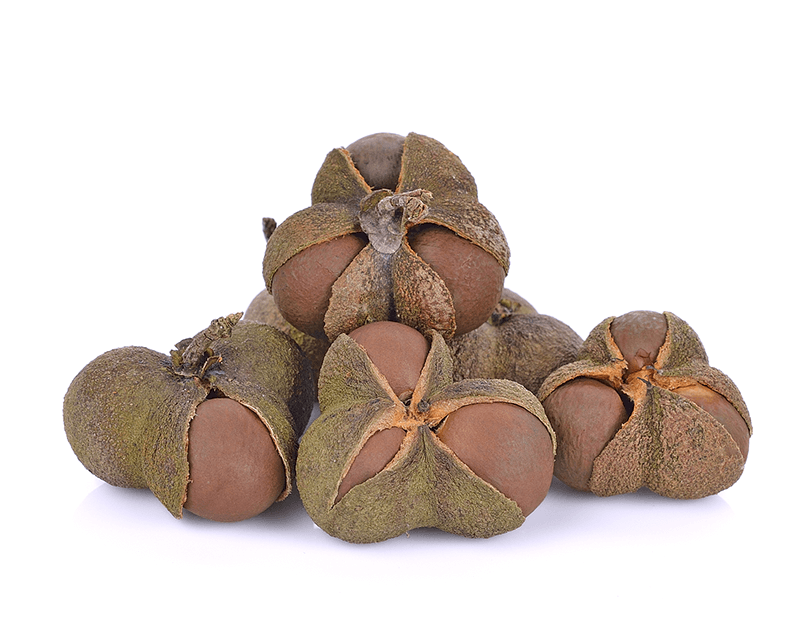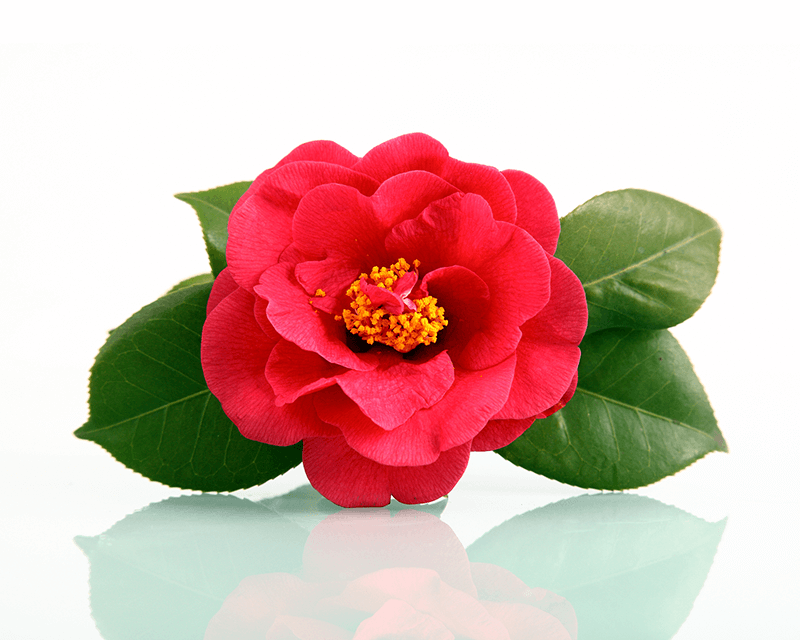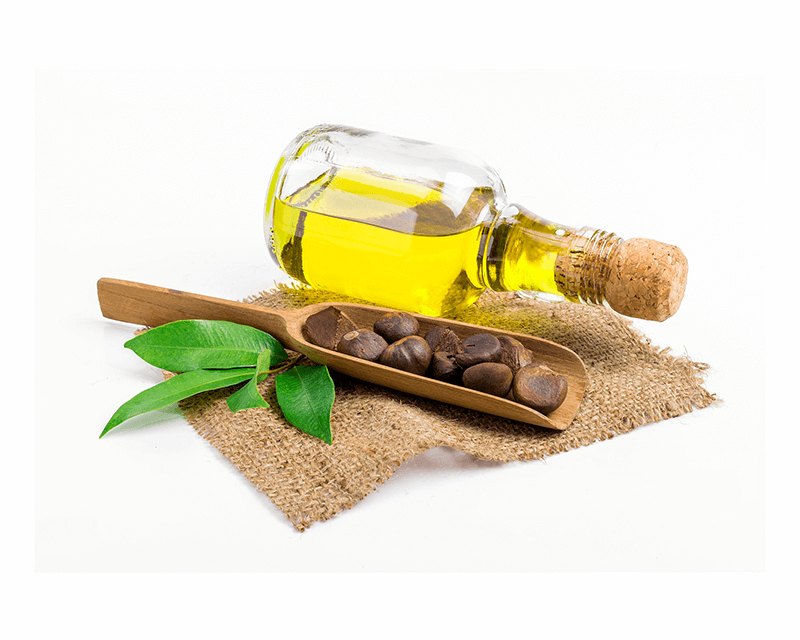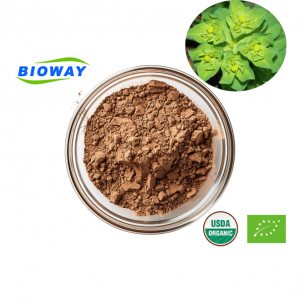Cold Pressed Green Tea Seed Oil for Skin Care
Tea seed oil, also known as tea oil or camellia oil, is an edible vegetable oil that is derived from the seeds of the tea plant, Camellia sinensis, specifically the Camellia oleifera or Camellia japonica. Camellia oil has been used for centuries in East Asia, particularly in China and Japan, for various purposes including cooking, skincare, and hair care. It has a light and mild flavor, making it suitable for cooking and frying. Additionally, it is rich in antioxidants, vitamin E, and fatty acids, which contribute to its moisturizing and nourishing properties for the skin and hair.
Tea seed oil is commonly used in cooking, particularly in Asian cuisines. It has a mild and slightly nutty flavor, making it suitable for both savory and sweet dishes. It is often used for stir-frying, frying, and salad dressings.
This oil is known for its high monounsaturated fat content, which is considered a healthier type of fat. It also contains polyphenols and antioxidants, which have potential health benefits. Additionally, tea seed oil is often used in skincare and hair care products due to its moisturizing and nourishing properties.
It is important to note that tea seed oil should not be confused with tea tree oil, which is extracted from the leaves of the tea tree (Melaleuca alternifolia) and is used for medicinal purposes.
| Test Item | Specification |
| Appearance | Light yellow to orange yellow |
| Odour | With the inherent smell and taste of camellia oil, no peculiar smell |
| Insoluble Impurities | Maximum 0.05% |
| Moisture and volatiles | Maximum 0.10% |
| Acid Value | Maximum 2.0mg/g |
| Peroxide Value | Maximum 0.25g/100g |
| Residual solvent | Negative |
| Lead (Pb) | Maximum 0.1mg/kg |
| Arsenic | Maximum 0.1mg/kg |
| Aflatoxin B1B1 | Maximum 10ug/kg |
| Benzo(a)pyrene(a) | Maximum 10ug/kg |
1. Tea seed oil is extracted from the fruits of wild oil-bearing plants and is one of the four major woody plant oils in the world.
2. Tea seed oil has dual functions in food therapy that are actually superior to olive oil. In addition to the similar fatty acid composition, lipid characteristics, and nutritional components, tea seed oil also contains specific bioactive substances such as tea polyphenols and saponins.
3. Tea seed oil is known for its high-quality and is in line with people's pursuit of natural and improved quality of life. It is considered a premium product among edible oils.
4. Tea seed oil has good stability, a long shelf life, a high smoke point, high heat resistance, excellent antioxidant properties, and is easily digested and absorbed.
5. Tea seed oil, along with palm oil, olive oil, and coconut oil, is one of the four major woody edible oil tree species worldwide. It is also a unique and excellent local tree species in China.
6. In the 1980s, the cultivation area of tea seed oil trees in China reached over 6 million hectares, and the main producing areas accounted for more than half of the edible oil production. However, the tea seed oil industry in China has not developed due to reasons such as the lack of superior new varieties, poor management, high initial investment, insufficient understanding, and lack of policy support.
7. The consumption of edible oils in China is mainly soybean oil, rapeseed oil, and other oils, with a low proportion of high-end health edible oils. In developed countries such as Europe and the United States, the consumption of olive oil has gradually become a habit. Tea seed oil, known as the "Oriental Olive Oil," is a Chinese specialty. The vigorous development of the tea seed oil industry and the supply of high-quality tea seed oil can help improve the consumption structure of edible oils among the population and enhance their physical fitness.
8. Tea seed oil trees are evergreen throughout the year, have a well-developed root system, are drought-resistant, cold-tolerant, have good fire prevention effects, and have a wide range of suitable growing areas. They can make full use of marginal land for development, promote rural economic development, green barren mountains, maintain water and soil, promote vegetation recovery in ecologically fragile areas, significantly improve the rural ecological environment and living conditions. They are an excellent tree species with good economic, ecological, and social benefits, in line with the direction and requirements of modern forestry development. Tea seed oil trees have outstanding characteristics of minimal damage and strong resistance during severe rainfall, snowfall, and freezing disasters.
9. Therefore, combining the vigorous development of tea seed oil trees with forestry post-disaster restoration and reconstruction can effectively improve the tree species structure, enhance the forestry's ability to resist natural disasters. This is particularly relevant for large-scale rainfall, snowfall, and freezing disasters, where tea seed oil trees can be used to replant and replace damaged areas. This will help solidify the long-term results of converting arable land into forested land.
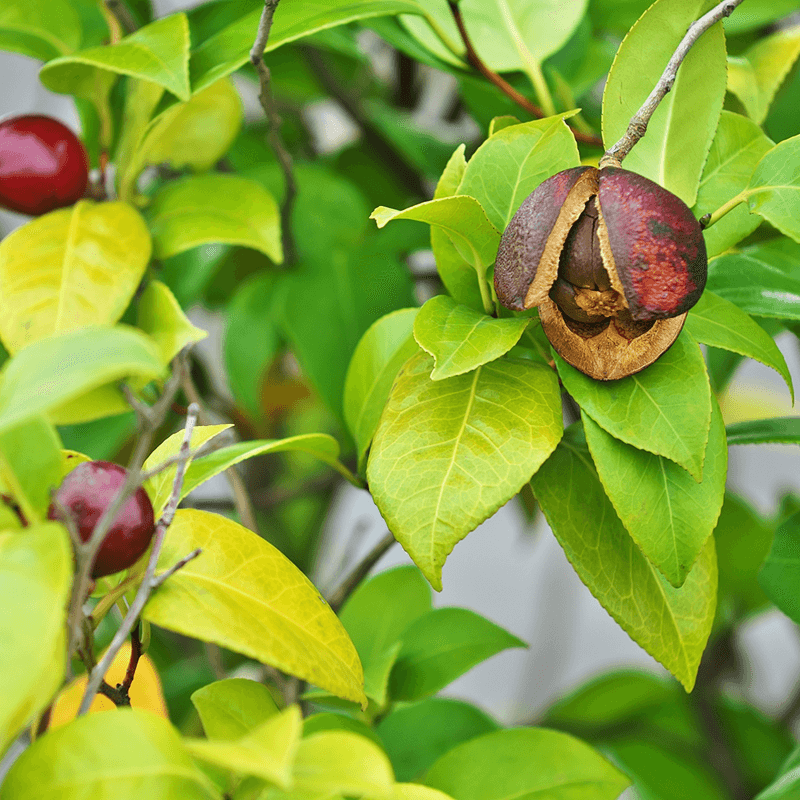
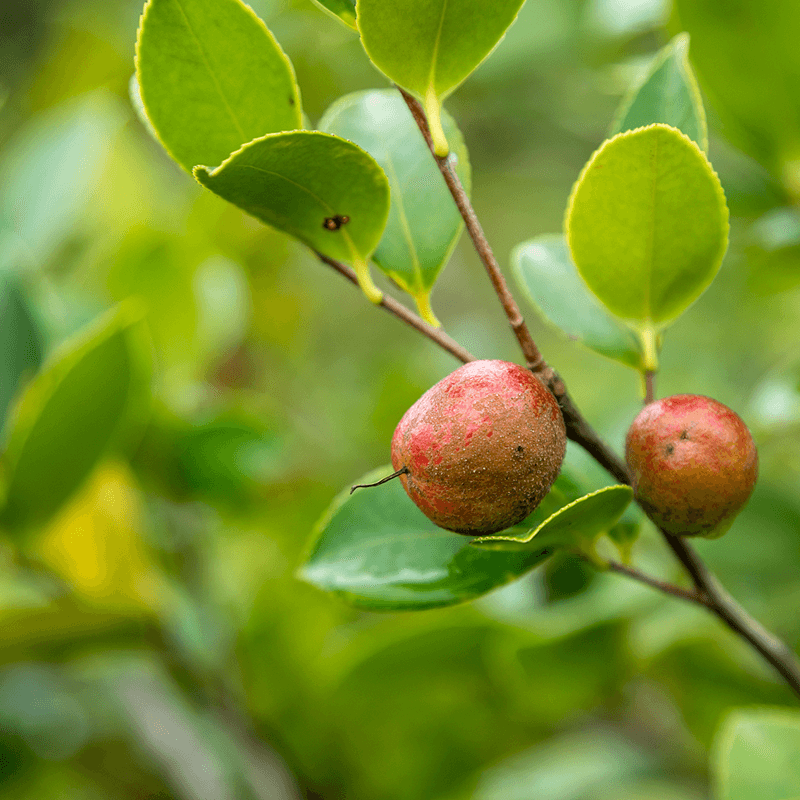

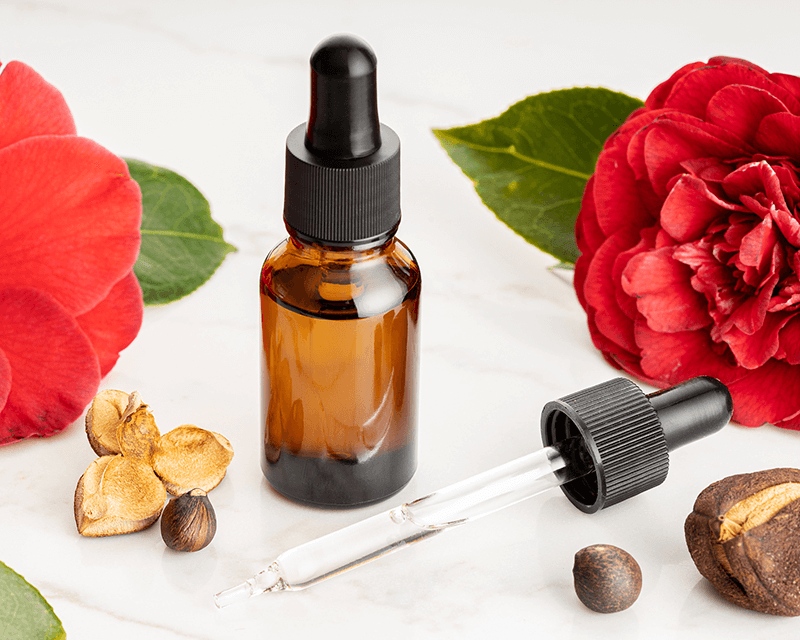
Tea seed oil has various applications in different fields. Here are some common uses of tea seed oil:
1. Culinary Uses: Tea seed oil is commonly used in cooking, especially in Asian cuisines. It is often used for stir-frying, sautéing, deep-frying, and salad dressings. Its mild flavor allows it to enhance the taste of dishes without overpowering other ingredients.
2. Skincare and Cosmetics: Tea seed oil is widely used in skincare and cosmetic products due to its moisturizing, anti-aging, and antioxidant properties. It is often found in lotions, creams, serums, soaps, and hair care products. Its non-greasy texture and ability to penetrate the skin make it a popular choice for various beauty formulations.
3. Massage and Aromatherapy: Tea seed oil is commonly used as a carrier oil in massage therapy and aromatherapy. Its light and smooth texture, along with its moisturizing properties, make it an ideal choice for massages. It can also be blended with essential oils for a synergistic effect.
4. Industrial Applications: Tea seed oil has industrial applications as well. It can be used as a lubricant for machinery due to its ability to reduce friction and heat. Additionally, it is used in the manufacturing of paints, coatings, and varnishes.
5. Wood Preservation: Due to its ability to protect against pests and decay, tea seed oil is used for wood preservation. It can be applied to wooden furniture, outdoor structures, and flooring to enhance their durability and lifespan.
6. Chemical Industry: Tea seed oil is used in the production of chemicals, including surfactants, polymers, and resins. It serves as a raw material for these chemical processes.
While these are some common application fields, tea seed oil may have other uses as well, depending on specific regional or cultural practices. It is always important to ensure that you are using tea seed oil in accordance with the instructions and recommendations provided by the manufacturer or a professional.
Tea seed oil has various applications in different fields. Here are some common uses of tea seed oil:
1. Culinary Uses: Tea seed oil is commonly used in cooking, especially in Asian cuisines. It is often used for stir-frying, sautéing, deep-frying, and salad dressings. Its mild flavor allows it to enhance the taste of dishes without overpowering other ingredients.
2. Skincare and Cosmetics: Tea seed oil is widely used in skincare and cosmetic products due to its moisturizing, anti-aging, and antioxidant properties. It is often found in lotions, creams, serums, soaps, and hair care products. Its non-greasy texture and ability to penetrate the skin make it a popular choice for various beauty formulations.
3. Massage and Aromatherapy: Tea seed oil is commonly used as a carrier oil in massage therapy and aromatherapy. Its light and smooth texture, along with its moisturizing properties, make it an ideal choice for massages. It can also be blended with essential oils for a synergistic effect.
4. Industrial Applications: Tea seed oil has industrial applications as well. It can be used as a lubricant for machinery due to its ability to reduce friction and heat. Additionally, it is used in the manufacturing of paints, coatings, and varnishes.
5. Wood Preservation: Due to its ability to protect against pests and decay, tea seed oil is used for wood preservation. It can be applied to wooden furniture, outdoor structures, and flooring to enhance their durability and lifespan.
6. Chemical Industry: Tea seed oil is used in the production of chemicals, including surfactants, polymers, and resins. It serves as a raw material for these chemical processes.
While these are some common application fields, tea seed oil may have other uses as well, depending on specific regional or cultural practices. It is always important to ensure that you are using tea seed oil in accordance with the instructions and recommendations provided by the manufacturer or a professional.
1. Harvesting: The tea seeds are harvested from the tea plants when they are fully matured.
2. Cleaning: The harvested tea seeds are thoroughly cleaned to remove any dirt, debris, or impurities.
3. Drying: The cleaned tea seeds are spread out in a well-ventilated area to dry. This helps remove excess moisture and prepares the seeds for further processing.
4. Crushing: The dried tea seeds are crushed to break them into smaller pieces, making it easier to extract the oil.
5. Roasting: The crushed tea seeds are lightly roasted to enhance the flavor and aroma of the oil. This step is optional and can be skipped if an unroasted flavor is desired.
6. Pressing: The roasted or unroasted tea seeds are then pressed to extract the oil. This can be done using hydraulic presses or screw presses. The pressure applied helps separate the oil from the solids.
7. Settling: After pressing, the oil is left to settle in tanks or containers. This allows any sediment or impurities to separate and settle at the bottom.
8. Filtration: The oil is then filtered to remove any remaining solids or impurities. This step helps ensure a clean and clear final product.
9. Packaging: The filtered tea seed oil is packaged into bottles, jars, or other suitable containers. Proper labeling is done, including the listing of ingredients, manufacturing and expiry dates, and any necessary regulatory information.
10. Quality Control: The final product is subjected to quality control tests to ensure it meets safety and quality standards. These tests may include checks for purity, shelf-life stability, and sensory evaluation.
11. Storage: The packaged tea seed oil is stored in a controlled environment to maintain its freshness and quality until it is ready for distribution and sale.
It's important to note that the exact process may vary depending on the manufacturer and the desired characteristics of the tea seed oil. This is a general overview to give you an idea of the production process.

Storage: Keep in a cool, dry, and clean place, Protect from moisture and direct light.
Bulk Package: 25kg/drum.
Lead Time: 7 days after your order.
Shelf Life: 2 years.
Remark: Customized specifications also can be achieved.
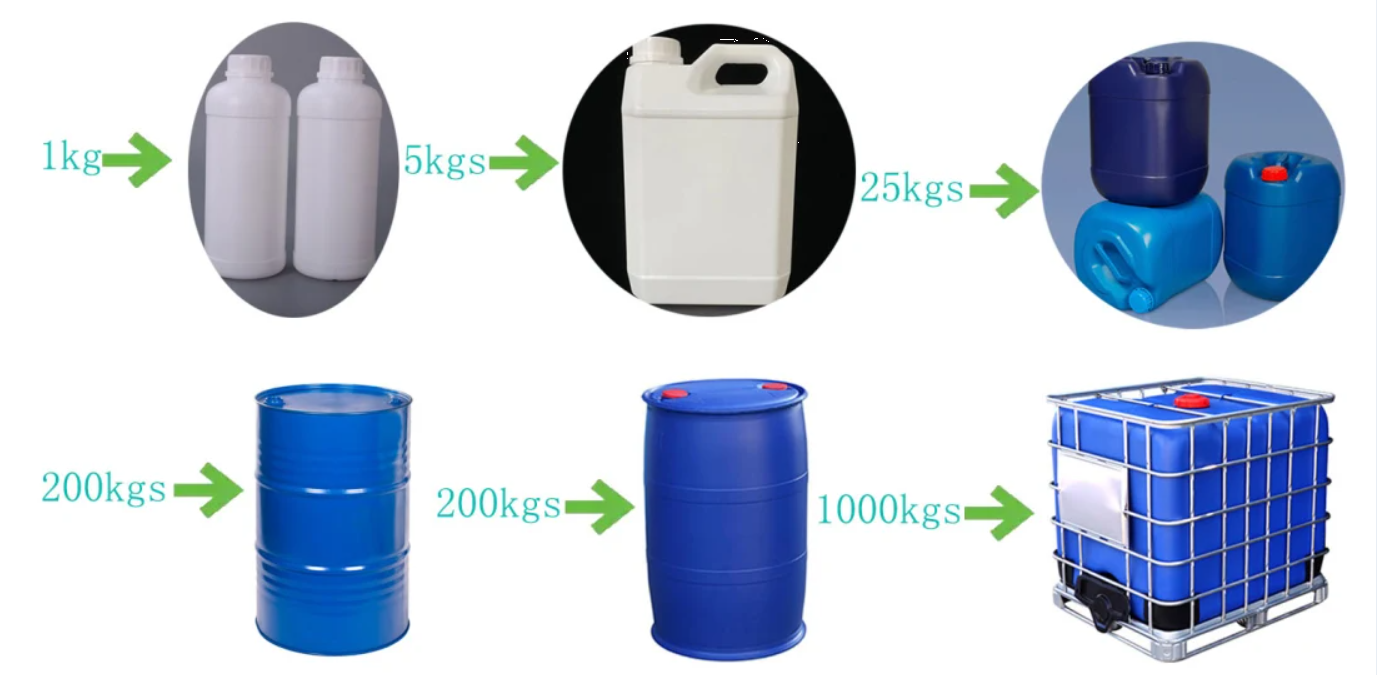
Express
Under 100kg, 3-5Days
Door to door service easy to pick up the goods
By Sea
Over300kg, Around 30 Days
Port to port service professional clearance broker needed
By Air
100kg-1000kg, 5-7Days
Airport to airport service professional clearance broker needed

Cold Pressed Green Tea Seed Oil for Skin Care is certified by USDA and EU organic, BRC, ISO, HALAL, KOSHER and HACCP certificates.

While tea seed oil has numerous benefits, it also has a few potential disadvantages that you should be aware of:
1. Allergic Reactions: Some individuals may develop allergic reactions to tea seed oil. It is always recommended to conduct a patch test before applying it to larger areas of the skin or consuming it. If any adverse reactions occur, such as skin irritation, redness, itching, or swelling, discontinue use immediately and seek medical advice.
2. Sensitivity to Heat: Tea seed oil has a lower smoke point compared to some other cooking oils, such as olive oil or canola oil. This means that if it is heated beyond its smoke point, it may start to break down and produce smoke. This can affect the taste and quality of the oil and potentially release harmful compounds. Therefore, it is not suitable for high-temperature cooking methods like deep frying.
3. Shelf Life: Tea seed oil has a relatively short shelf life compared to some other cooking oils. Due to its high content of unsaturated fatty acids, it is susceptible to oxidation, which can lead to rancidity. Therefore, it is advisable to store tea seed oil in a cool, dark place and use it within a reasonable timeframe to maintain its freshness and quality.
4. Availability: Depending on your location, tea seed oil may not always be readily available in local supermarkets or stores. It may require more effort to find and may be more expensive compared to more common cooking oils.
It is important to note that these potential disadvantages may not be applicable or significant for everyone. As with any product, it's always a good idea to do your own research, consult with health professionals or experts, and consider your own personal preferences and needs before using tea seed oil or any other unfamiliar product.





